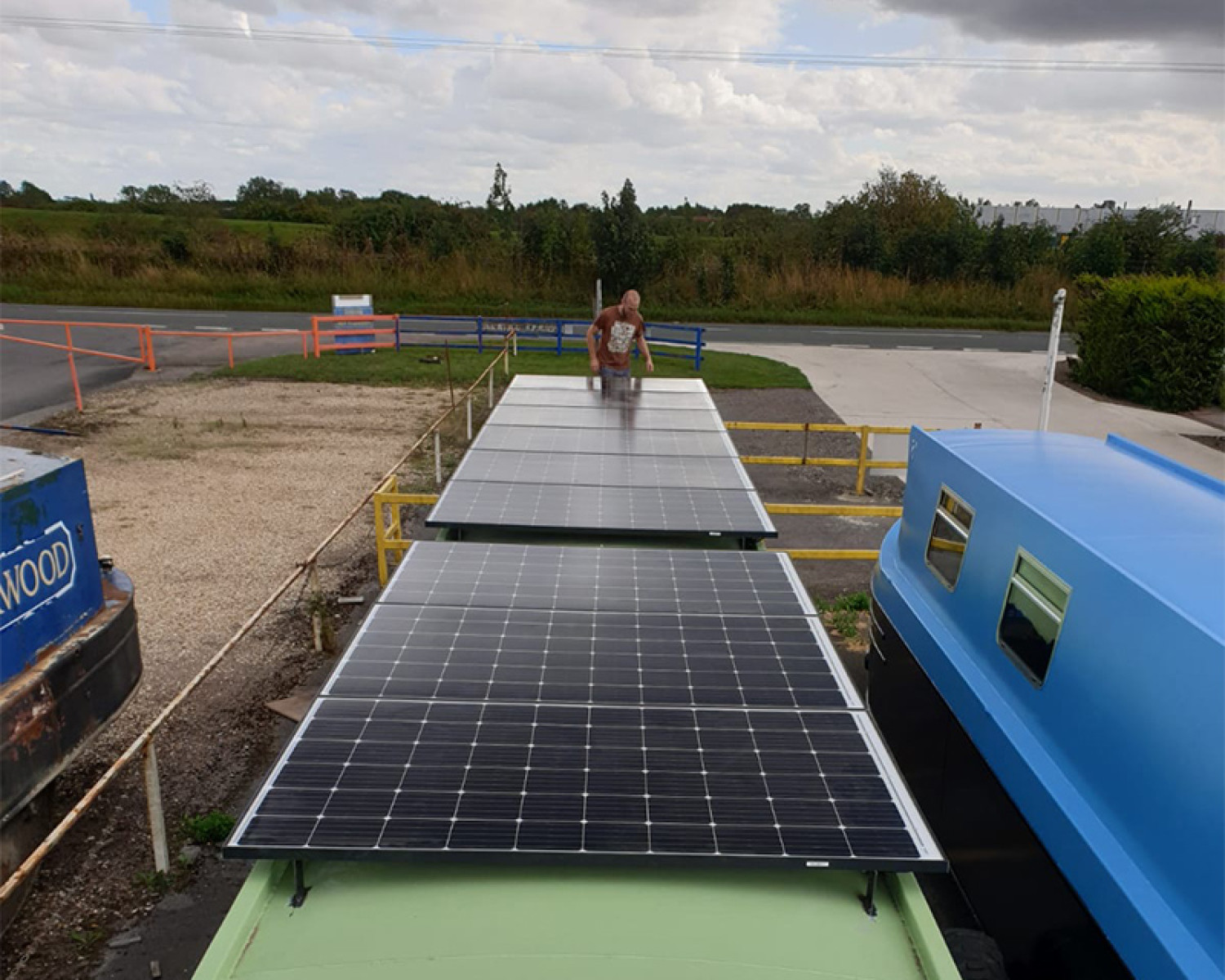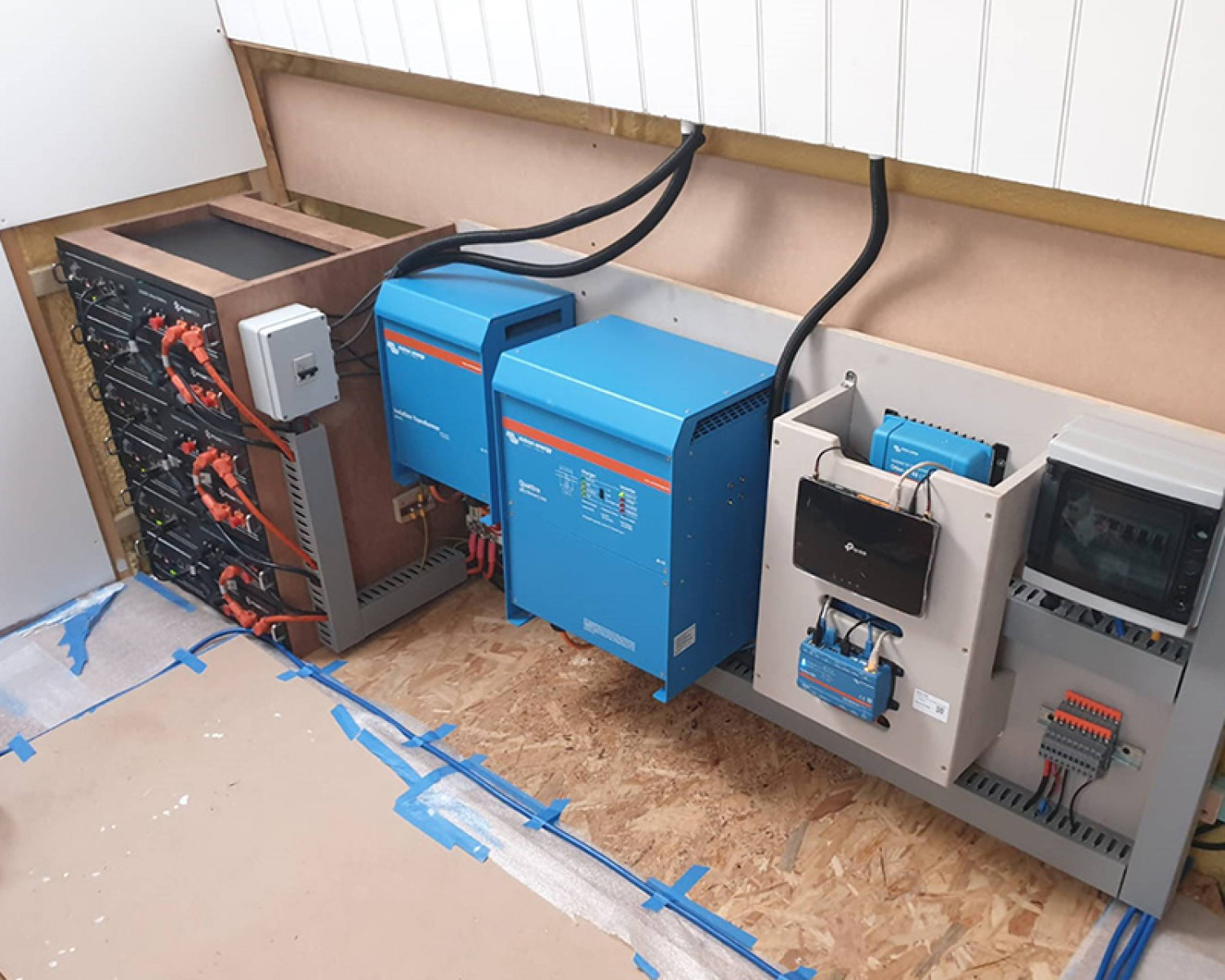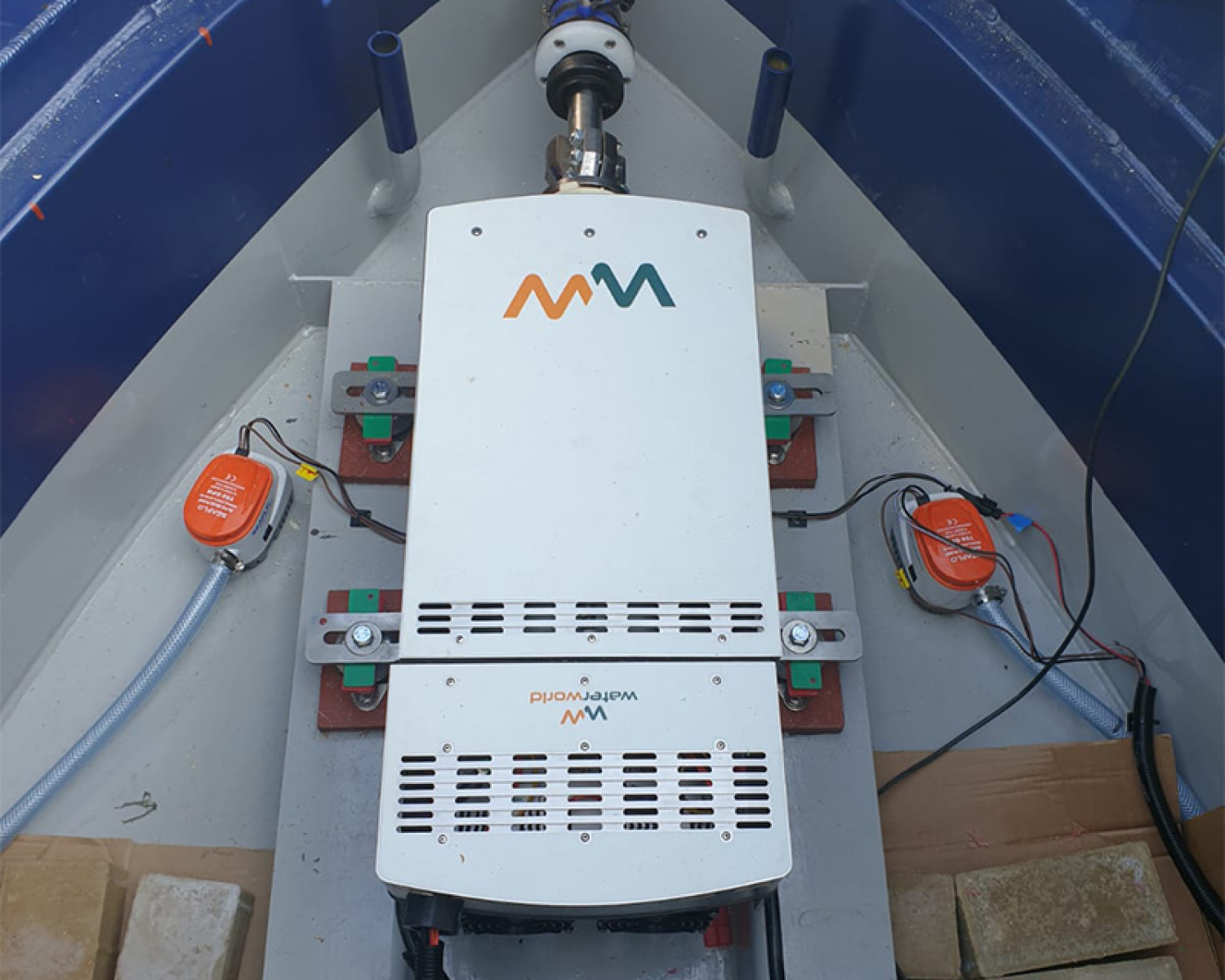London Liveaboard Narrowboat
Application:
Date:
Designed with Waterworld electric motors & Solar Power for Comfort and Efficiency
George Killaspy, the owner of this brand new 55ft, 14 ton narrowboat started this project knowing that his boat was more about living than travelling. Using the boat as his home whilst working in London he would only be moving around 1-2 miles every fortnight, and creature comforts dictated power requirements more than worries of running out of range.
Not only did the design include an electric motor – bringing the silence, and emission free environment missing on many such projects, it also incorporated renewable energy and a lithium battery system for even greater efficiencies.

Paul Holland, MD at Energy Solutions has worked on similar leading edge projects with marine clients, helping them find the exact power system that not only meets their needs but helps reduce noise, emissions and long term costs. “This was the first time we had been asked to supply a purely electric/renewables solution for a narrowboat – but it was great to be involved and to help George achieve his vision. The move towards entirely diesel-free vessels is well underway and we see it as the future for the inland waterways, who wouldn’t want to reduce all those elements and experience a more sustainable way of living and boating. When more charging points are installed on the inland waterways this will be become an even more viable option for all owners”.
The boat is very much tailored to the way George, will be using it. Working with the team at Energy and using his own engineering experience, he was able to plan the system precisely, managing usage and efficiencies closely. George explains his choices:
“The amount of storage was decided not by the need to move the boat, but by all electric cooking and heating, I figured 12kWh should be plenty for a couple of days heavy use. I didn’t account for moving the boat, as it would be such a minor part of the power demand that I could just curtail the creature comforts for a little while (not have that jacket potato) to ensure there was power on a moving day.”
The 14 ton vessel is the be moored in Reading and George was keen to ensure that he would be able to run it as efficiently as possible whilst still sticking to a tight budget for the entire build.

“After discussing options and pricing with the team at Energy I chose to go lithium for the power storage because they like to live in the 20-90% state of charge, they don’t need or want a regular full recharge, unlike lead acid. I wanted the boat to be entirely solar powered, and the natural fluctuation of available power meant if I installed AGM or Gel I’d have to use a backup generator to routinely bring them up to 100%. The cost of AGM plus a generator was similar (actually slightly higher) to the cost of a large lithium battery bank, with all the negatives of larger volume, heavier, less available capacity, fewer power cycles, diesel fumes, engine maintenance…etc so the choice became less difficult to make!”

The integration of renewable power was the final part of the mix, and the one with the biggest variances to accommodate, George details the final element:
“Having the boat entirely solar powered meant fitting as many panels as possible on the roof. 9x 350W panels. They should cover about 250% of my loads in summer, probably only 60-70% in winter, but I’ll see, and I can plug in here at the Reading if I need to. Obviously, I’ll be onboard all the time - if it was just a weekend boat it would never need plugging in, but the whole build is very much tailored to my expected use.”
George is currently completing the build with the final interior fit out and is looking forward to a warm and comfortable Autumn on board.
Sign up to our mailing list
Keep up to date with the latest news and offers.
|
|
Thank you for Signing Up |


Submitting your details indicates that you have read and agree to our privacy policy and cookie policy. You can unsubscribe from our emails by using the link at the bottom of all emails we send.